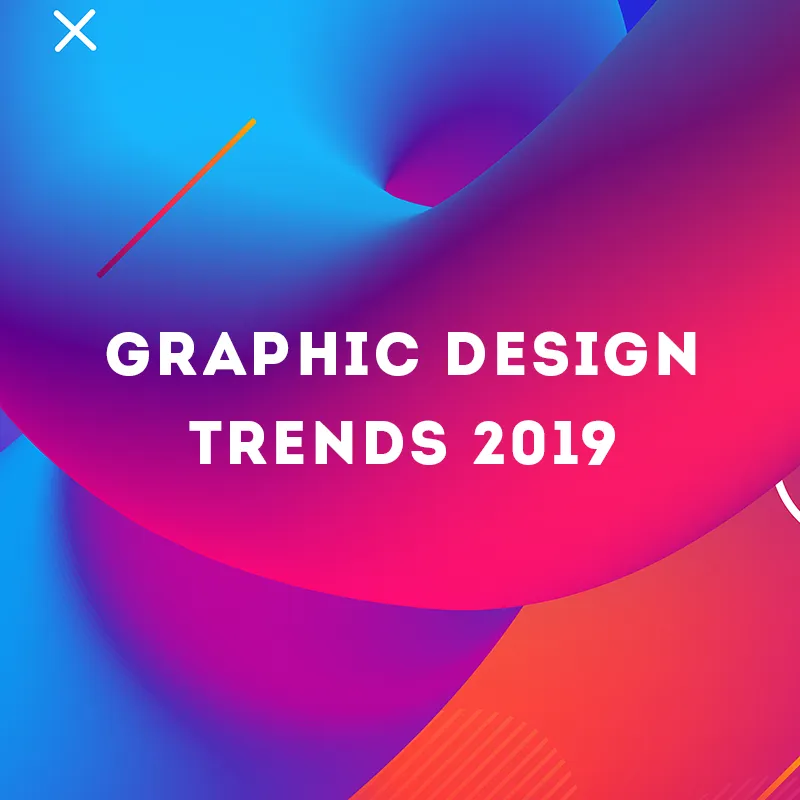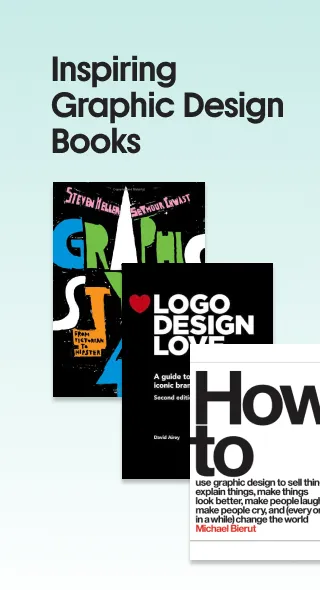Exploring the Different Types of Graphic Design with Examples
Considering that people perceive 90% of information visually, the importance of graphic content in business development cannot be overstated. So, what is graphic design? Simply put, it can be described as a form of visual communication between a brand and its audience.
Businesses use graphic design at all stages of customer interaction to spread messages and attract and persuade clients. However, it is essential to know that there are many approaches in this sphere, each of which can help achieve specific business goals. To help you choose the best strategy, we’ll look at the main types of graphic design with examples and share valuable tips to help you create top-notch visual content.
The list of graphic design types
- Visual identity graphic design
- User interface (UI) graphic design
- Advertising graphic design
- Packaging graphic design
- Publication graphic design
- Motion graphic design
- Illustration
Let’s explore the main features of different types of graphic design!
1. Visual identity graphic design
Visual identity refers to a set of graphic elements that represent a brand. In fact, it is the face of the brand, because it is the identity (or corporate identity) that makes it recognizable and allows it to stand out from the competition. It reflects the company’s identity and is usually outlined in the brand book.
Key elements of visual identity include:
- logo;
- color palette;
- brand typography;
- graphics;
- icons, buttons;
- images.
The key to a successful visual identity is consistency, which allows you to create a cohesive brand image. This includes consistent use of the above-mentioned visual elements across all channels, including websites, social media channels, emails, printed materials, videos, and more. In addition to improving visibility and the ability to stand out in the marketplace, visual identity helps with winning the trust of your audience. And for 57% of consumers, an emotional connection with a brand serves as motivation to buy from it more often.
A strong identity is one of the most important elements of branding. Just think of the logos of brands like McDonald’s or Nike. Seeing the branded letter M or the famous swoosh sign, most people immediately know the companies they represent. These logos have remained almost unchanged for decades, and this consistency reinforces brand identity and creates a sense of trustworthiness.
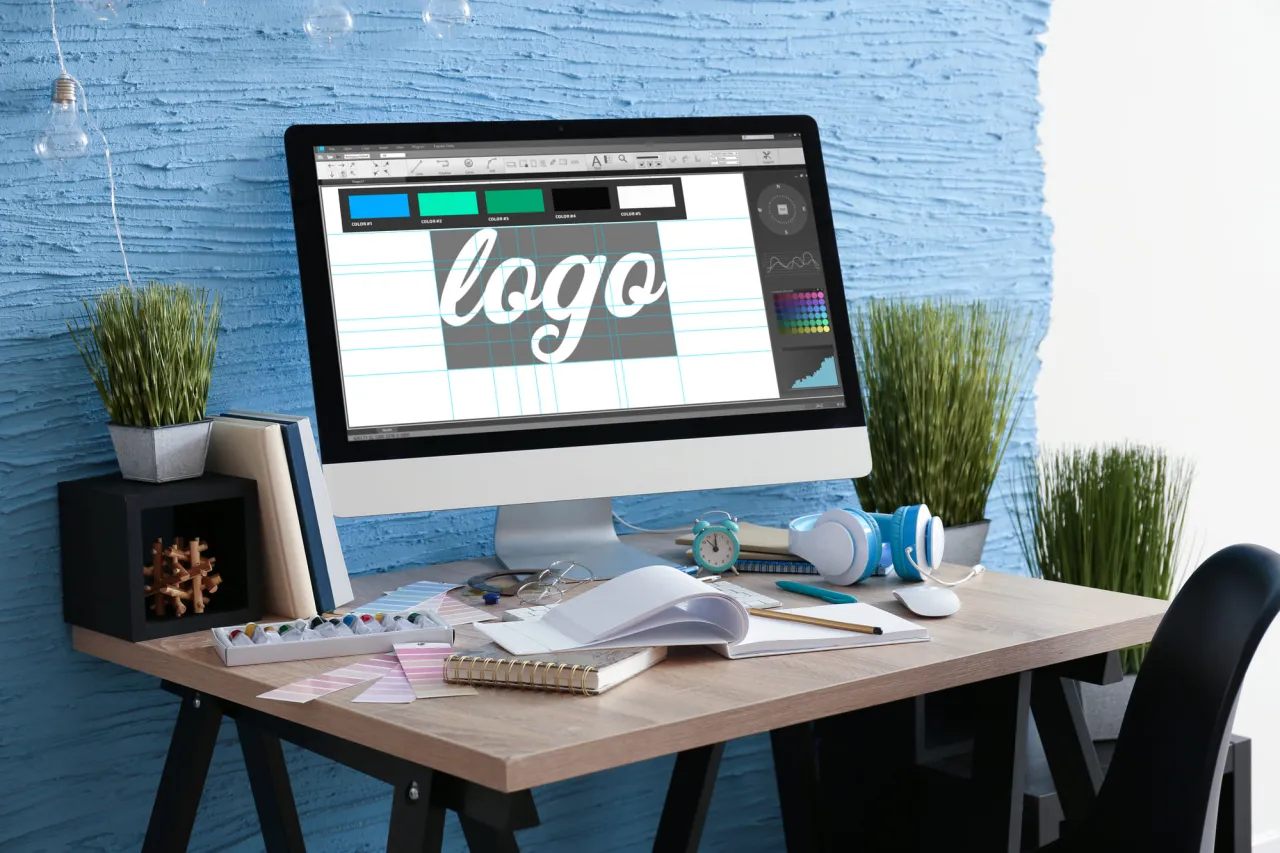
Visual identity graphic design tips
- get to know your brand. To create a visual identity that differentiates you, it’s important to define your uniqueness, mission, and values, as well as your key competitive advantages.
- be audience-focused. Since the purpose of identity is to capture the audience’s attention, it is important to be clear about who your potential customers are, how to work with them, and what they might be interested in.
- pick your style. The specifics of your brand and the understanding of your audience’s preferences will help you choose your visual identity style. Older generations will appreciate a classic style, while Zoomers and Generation Alpha are more likely to be attracted to bold solutions.
- choose your corporate colors. This is an important step because colors help evoke certain emotions and set the right mood.
- maintain consistency. Make sure the communication with your audience across all channels creates a cohesive and consistent experience.
2. User interface (UI) graphic design
User interface design or UI design, as it is most often called, describes the process of developing website and application interfaces. This type of graphic design involves working on the graphical part of the interface—from screen layout to transitions and every interaction. It is usually preceded by the creation of a user interface prototype based on user experience (UX) and target audience analysis.
The main elements of user interface design include:
- menu;
- buttons;
- links;
- icons;
- dashboards;
- text fields;
- animation;
- sliders.
It is UI design that determines how user-friendly the interface will be, and therefore how satisfied the user will be after interacting with your digital product. According to Forrester research company, high-quality interface design can improve website conversion rates by 200%. In addition, according to a Stanford University study, 75% of users form an opinion about the trustworthiness of a website based solely on its appearance. A well-thought-out UI design improves functionality and increases user engagement, retention, and return rates.
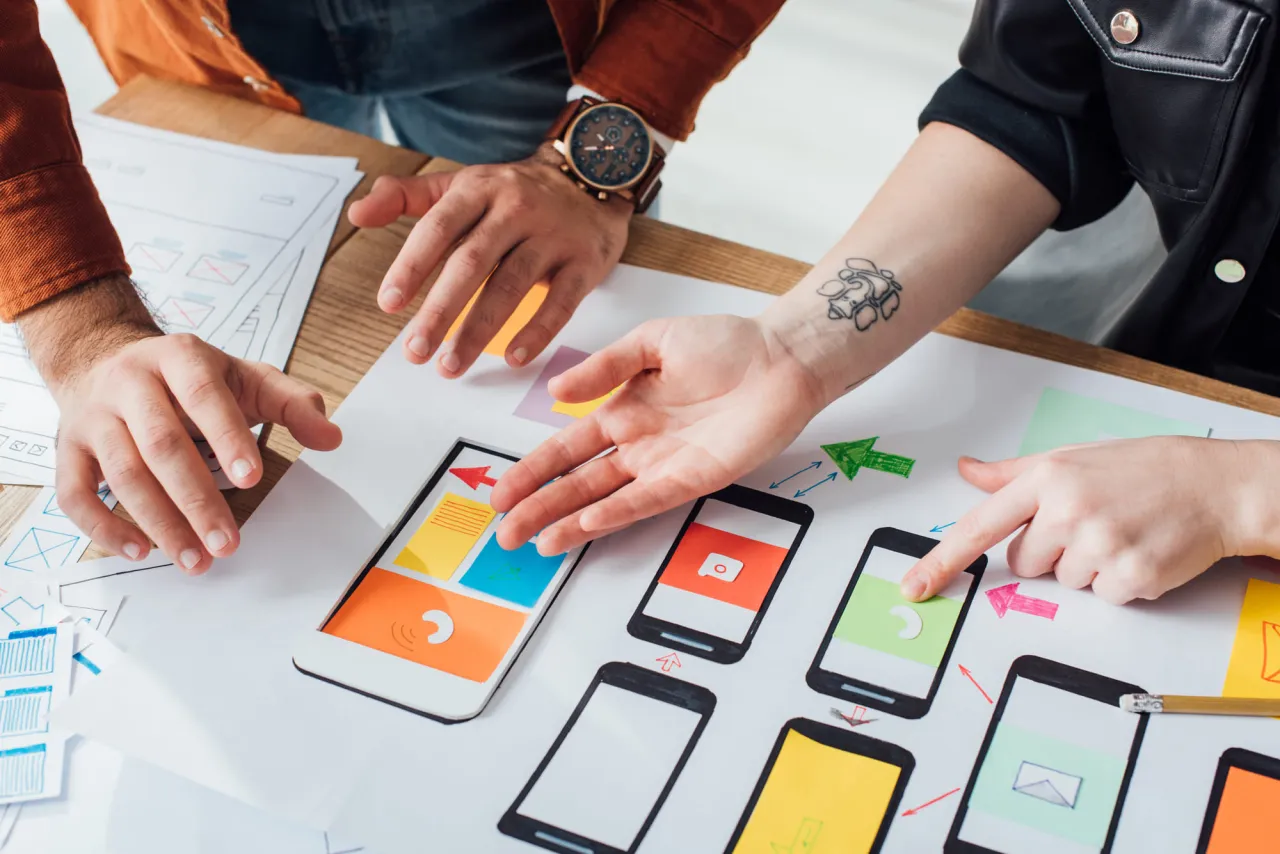
UI graphic design tips
- prioritize your users. It’s about the need to conduct user audience research, which will allow you to create a design that is convenient and understandable for all users.
- use grids. Modular grids combine all screen elements and blocks into a single system. They make it easy to create a consistent design that looks the same on every device.
- keep everything consistent. Consistency is one of the most important principles of UI design. It means using the same components, such as color schemes, fonts, and other design elements throughout the interface.
- work on buttons. Since user interaction is the most important task of the interface, pay special attention to CTA buttons. Make sure they are visible and provide clear information about the desired action.
- ensure accessibility. Users will interact with your interface under a variety of conditions, so it’s important to provide them with the most comfortable experience possible. To do this, make sure that text and other elements have enough contrast to be readable on different screens.
3. Advertising graphic design
Advertising (or marketing) design is a tool used to achieve specific marketing goals. This is exactly what ensures an effective visual presentation of a brand’s offerings. Advertising design is an important component of a company’s marketing strategy, as it should effectively attract their target audience and motivate them to make a purchase.
The most common forms of advertising design are:
- social media advertising;
- commercials and video campaigns;
- display advertising;
- direct email advertising;
- outdoor advertising;
- print advertising.
Advertising design can also include the design of your website or landing page. Graphics are fundamental to a positive user experience, as an attractive visual design ensures that customers will return to the website. In general, quality advertising design significantly increases the chances that your message will be noticed, which is especially important in today’s information-saturated world. This type of graphic design also improves brand memorability and helps promote and sell goods or services.
There is a lot of data showing how advertising design affects business development. Specifically, according to McKinsey & Company statistics, brands that use design effectively generate 32% more revenue and 56% more total return to shareholders. The company’s research proves that prioritizing quality design puts companies in a winning position and allows them to leave their competitors far behind.

Advertising graphic design tips
- decide on the goal. Before you start creating a design, it is important to understand its purpose. This is a case where function dictates form.
- remember the design basics. We mean balance, alignment, visual hierarchy, and other components that allow you to create harmonious and appealing graphics.
- strive for conciseness. Simple does not mean bad. The clearer you are about your offerings through design, the better.
- add convincing text. Graphics alone are not enough to effectively convey a message. Describe the benefits of your offer to engage the audience.
- call to action. Be sure to add and highlight a CTA to lead users to conversion.
4. Packaging graphic design
This type of design involves the development of product packaging that allows you to store, identify, and deliver products. At the initial stage, the main function of packaging is to attract the consumer’s attention and provide information about the product. Another key function is product protection. Next, the marketing component comes into play, as packaging is an important element of branding that contributes to better recognition of your business.
The packaging design most commonly uses the following elements:
- brand logo;
- brand colors;
- typography;
- special marks (for example, indicating that a product is made in a specific country or that it complies with certain industry standards).
To understand how important packaging is, consider that 70% of consumer purchasing decisions are made in-store. This means that the main competition for consumer attention takes place at that very moment. And packaging design can become your main trump card, allowing you to outshine your competitors. Well-designed packaging can provide additional value to the audience, promote product recognition, and increase sales.
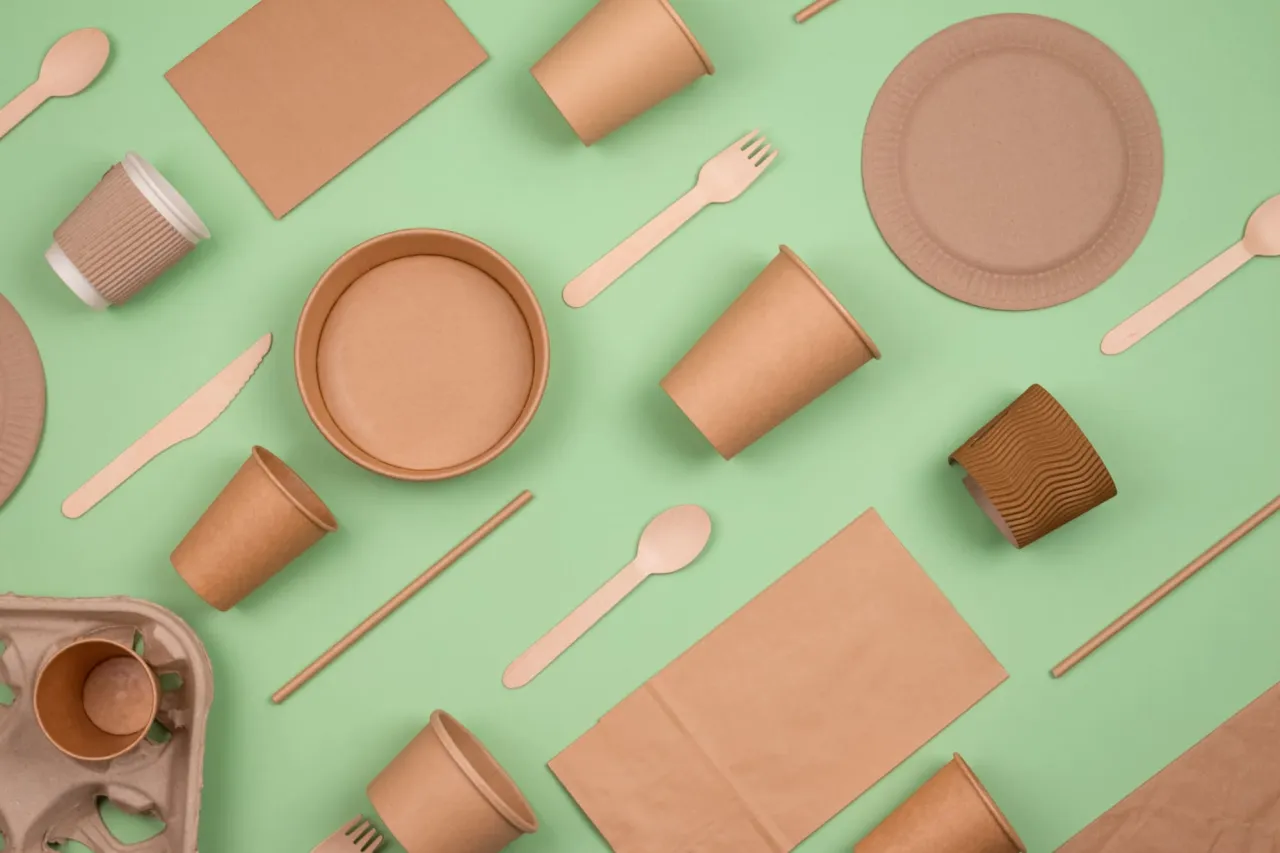
Packaging graphic design tips
- focus on attractiveness. To stand out among the abundance of products on the market, your product needs eye-catching packaging that easily grabs consumer attention. This can be achieved through colors, fonts, and images.
- make it informative. Consumers should immediately and clearly understand what kind of product they are looking at and what they need it for, so try to provide all key information on the packaging.
- don’t forget about convenience. Equally important is how easy it is for the consumer to transport and unpack their purchase. If not well thought out, this component of the user experience can ruin everything.
- offer sustainable solutions. Consider using packaging made from recycled materials. This can become your competitive advantage, allowing you to enhance audience loyalty.
5. Publication graphic design
Publication design is the process of creating layouts for newspapers, magazines, books, and other publications. Primarily, it concerns printed materials, although recently, the design of digital publications is also becoming increasingly popular. In the first case, the designer makes decisions regarding the use of colors, fonts, images, white balance, layout, and navigation, as well as the choice of paper—all of which have a strong impact on the look and feel of the publication. In digital publications, in addition to the elements mentioned above, the designer deals with interactive components that require a special approach.
Examples of print publication graphic design
- books and book covers;
- magazines;
- newspapers;
- catalogs;
- reports;
- brochures.
Examples of digital publication graphic design
- online magazines;
- blogs;
- e-books;
- digital reports;
- digital catalogs.
The main benefits offered by quality publication design include improved audience engagement, a stronger brand image, and effective messaging. Whatever format you choose—magazine advertising or an online blog—it’s a great way to reach a new audience that you may not have had contact with through other communication channels.
Want to learn more about promoting your business with printed materials? Read our article “Print Is Not Dead: How Your Brand Can Benefit Form Print Marketing.”

Publication graphic design tips
- limit the number of fonts. To make your design look coherent and uncluttered, choose two fonts, one for the body text and one for the headings. For example, a classic combination is grotesque for the text and antique for the heading.
- format the text correctly. This means a thoughtful choice of font size, comfortable leading (or line spacing), and line length to make the text as readable as possible.
- ensure visual hierarchy. Visual hierarchy defines primary and secondary elements, and guides the viewer’s attention. You can create it using font size (the more important, the bigger) or color (highlighting words or elements you want to emphasize with color).
- use white space. White space allows you to balance text and graphics, as well as ensure the legibility of your message.
- choose quality images. Printing requires high-resolution images, so don’t take the risk of using files of questionable quality. You can find professional images on any topic in our library.
6. Motion graphic design
Motion design is the process of creating animated graphics. It allows you to turn a static image into engaging dynamic content. For this purpose, tools such as form, color, typography, music, and motion are used. The main advantage of motion design is that it can transform dull information with numbers and facts into a captivating story. This type of graphic design also conveys your message to the viewer in just a few seconds.
There are two main areas of motion design: 2D and 3D motion design. The first is to animate a flat image, and the second is to create three-dimensional graphics. Today, motion design is used in many areas, including:
- video production;
- cinema production;
- advertising;
- educational projects;
- social media;
- UI design.
If you need to present a complex concept, product, or service, motion design is a great choice. A vivid example is the legendary campaign Dumb Ways to Die by Metro Trains Melbourne. It’s hard to think of a more interesting way to talk about subway safety rules. This type of content significantly increases engagement, allows you to win the attention and trust of the audience, and has great viral potential.

Motion graphic design tips
- start with a creative brief. By outlining key components, including objectives, tone, message, budget, and timelines, you will guide your project’s development and ensure that all stakeholders have a shared vision.
- turn to storytelling. Motion design provides a great opportunity to tell a compelling story. Think over a hero and conflict to showcase your product or service in the best way possible;
- discuss serious things in a funny manner. The Metro Trains Melbourne campaign shows how engaging motion content can be even on the most serious topics. Don’t be afraid to use the power of humor.
- reach out to different channels. Motion graphics are perfectly suited for distribution across various platforms. In addition, you can repurpose your content by breaking it down and adapting it to different channels.
To make the animation creation process as convenient and consistent as possible, use storyboards. Find useful tips and templates in our thematic article about storyboarding with tips and templates.
7. Illustration
Illustration is a type of graphics. Simply put, it’s about creating drawings that help convey a certain idea or tell a story. Illustration is one of the most creative approaches because in this case, the author can create any worlds, characters, and plots, even the most fantastic ones. Due to the versatility and wide range of possibilities offered by illustration today, it can be seen everywhere: on websites, book covers, posters, flyers, banners, mobile applications, newspapers and magazines, and more.
Main illustration types:
- 3D illustration;
- cartoons and comics;
- concept art;
- editorial illustration;
- fashion illustration;
- flat illustration;
- line art;
- posters.
Illustration allows you to embody abstract concepts, set a certain mood, and create unique and memorable images. It’s a great way to grab the audience’s attention and showcase the brand’s personality. No surprise, that leading companies often turn to this approach. Here’s a vivid example—AirBnB’s visual identity where friendly and inclusive illustrations play a key role. Do you think that this type of design is not for every business? Take a look at another example of illustration usage—for Slack business communication platform.
Illustration tips
- decide on the goal. What exactly do you need illustrations for? Will you be using them on your website, app, or perhaps packaging? Your answer will allow you to determine the technical characteristics of the illustrations.
- think over the style. The illustration style should be memorable and evoke emotions, all while being consistent with your brand identity and coordinated with other visual communication elements.
- work in vector format. With vectors, you can easily edit and resize images without pixelation. Moreover, vector files also tend to be lighter.
- choose a color scheme. Limiting the choice of colors makes it much easier to create a desired aesthetic. In addition, it will maintain the consistency of your visual communication.
Final thoughts on different types of graphic design
It is graphic design that largely determines the success of communication between a brand and its audience. By relying on high-quality design, you can win the attention and loyalty of your customers and strengthen your connection with them.
And while identity, advertising, and UI design are things most brands cannot do without, illustration, packaging, publication, and motion design are areas that can introduce new perspectives, help you attract your audience, and boost your business performance.
Graphic design FAQs
What is graphic design used for?
Graphic design combines visual art and communication to convey messages and ideas through visual content. It shapes a brand’s identity through logos, enhances user experience on websites, markets products via compelling advertisements, gives structure to publications like magazines, and transforms data into easily digestible infographics. Whether you’re browsing a website or choosing a product by its packaging, graphic design influences your decisions every day.
How many types of graphic design are there?
It’s challenging to pin down an exact number due to the evolving nature of the graphic design field. While graphic design encompasses a broad range of disciplines and serves many industries and communication needs, our article delves into seven main types that have their own significance and application. Depending on the interests and training, designers might specialize in one area or have expertise in multiple types.
What is the most common type of graphic design?
One of the most common types of graphic design is visual identity design. It focuses on creating the visual elements that represent a company’s brand, such as logos, color palettes, and typography. Almost every business, from multinational corporations to local cafes, requires visual identity design to convey its messages and personality to its target audience.
Other articles that may interest you
The Complete Guide to Creating High-Converting Landing Pages
10 Best Data Visualization Tools and Techniques in 2023
Your Essential Guide to Adaptive Design: Key Principles and Techniques
Storyboarding: Areas of Application and Tips for Creation (+ Collection of Templates)
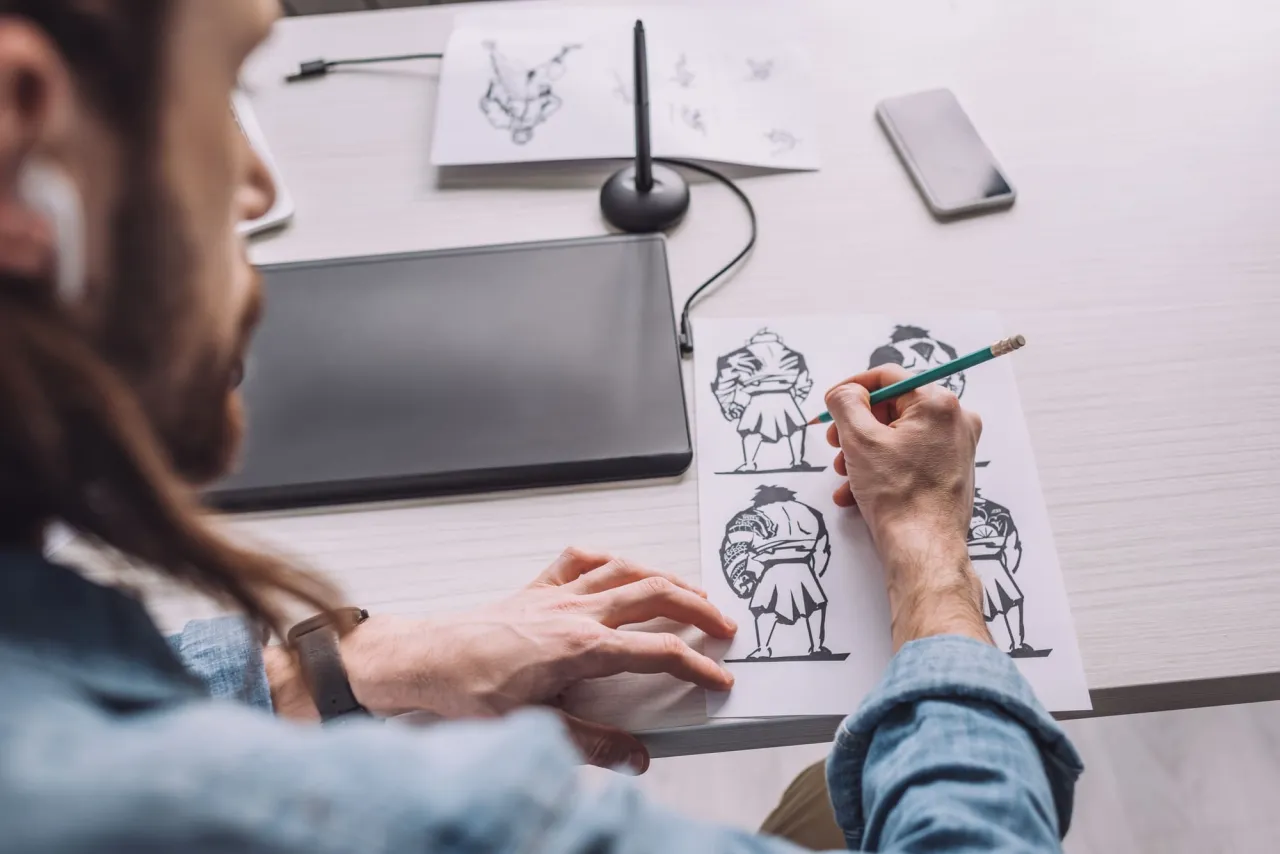




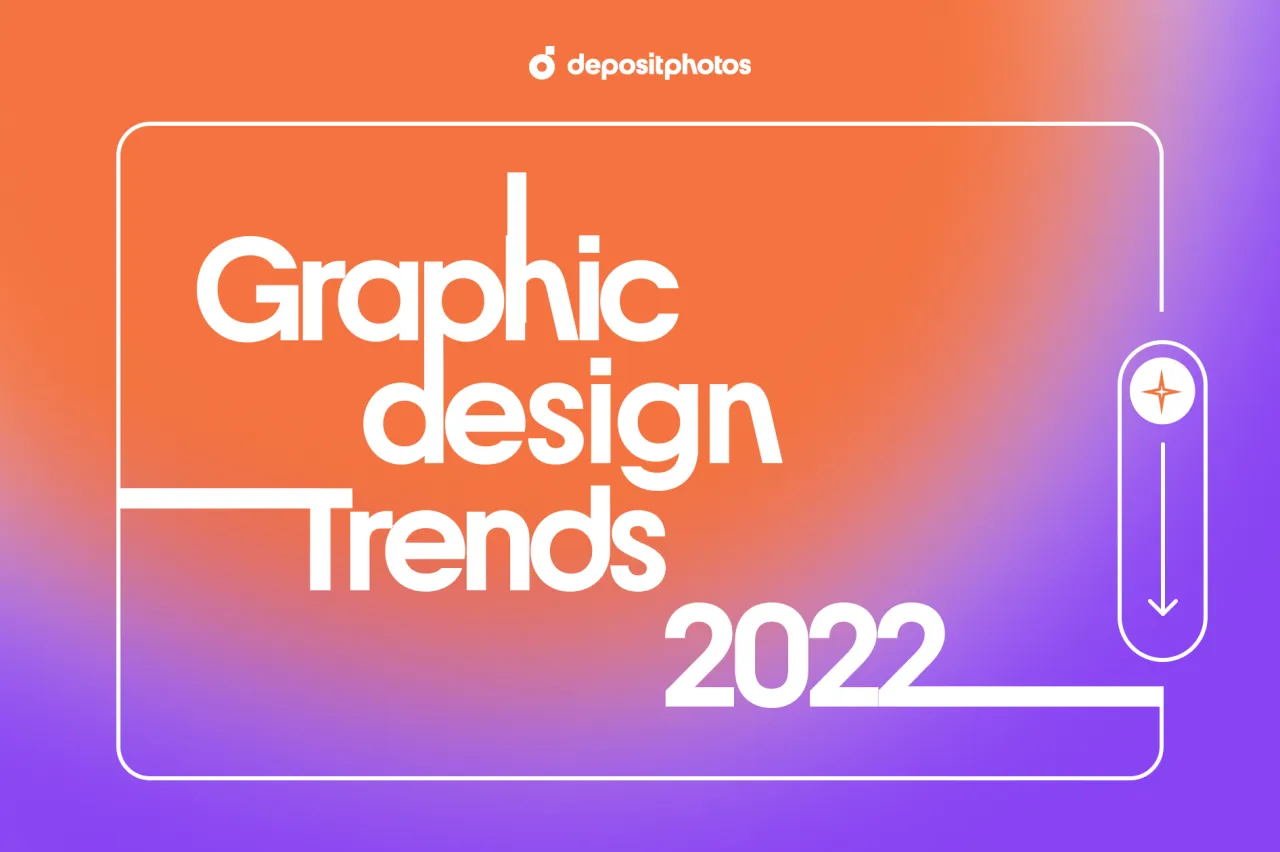
![Graphic Design Trends 2021 [Infographic]](https://depositphotos-blog.s3.eu-west-1.amazonaws.com/uploads/2021/02/Graphic-Design-Trends-2021-Infographic-1.webp)
